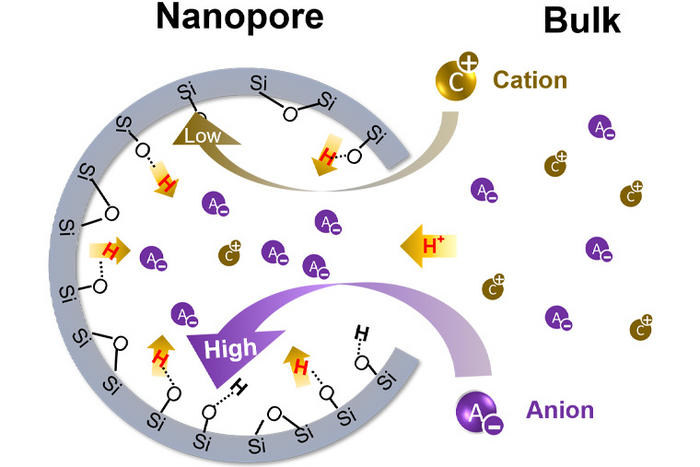There is an entire aqueous universe hidden within the tiny pores of many natural and engineered materials. Research from the McKelvey School of Engineering at Washington University in St. Louis has shown that when such materials are submerged in liquid, the chemistry inside the tiny pores — known as nanopores — can differ critically from that in the bulk solution.

Credit: Jun Lab
There is an entire aqueous universe hidden within the tiny pores of many natural and engineered materials. Research from the McKelvey School of Engineering at Washington University in St. Louis has shown that when such materials are submerged in liquid, the chemistry inside the tiny pores — known as nanopores — can differ critically from that in the bulk solution.
In fact, in higher-salinity solutions, the pH inside of nanopores can be as much as 100 times more acidic than in the bulk solution.
The research findings were published Aug. 22 in the journal CHEM.
A better understanding of nanopores can have important consequences for a variety of engineering processes. Think, for example, of clean-water generation using membrane processes; decarbonization technologies for energy systems, including carbon capture and sequestration; hydrogen production and storage; and batteries.
Young-Shin Jun, a professor of energy, environmental and chemical engineering, and Srikanth Singamaneni, the Lilyan & E. Lisle Hughes Professor in the Department of Mechanical Engineering & Materials Science, wanted to understand how pH — the measure of how acidic or basic a liquid is —in nanopores differed from that of the bulk liquid solution they are submerged in.
“pH is a ‘master variable’ for water chemistry,” Jun said. “When it is measured in practice, people are really measuring the pH of the bulk solution, not the pH inside the material’s nanopores.
“And if they are different, that is a big deal because the information about the little tiny space will change the entire prediction in the system.”
Read more on the engineering website.
Journal
Chem
DOI
10.1016/j.chempr.2022.07.021
Method of Research
Experimental study
Subject of Research
Not applicable
Article Title
Ionic Surface Propensity Controls pH in Nanopores
Article Publication Date
22-Aug-2022




